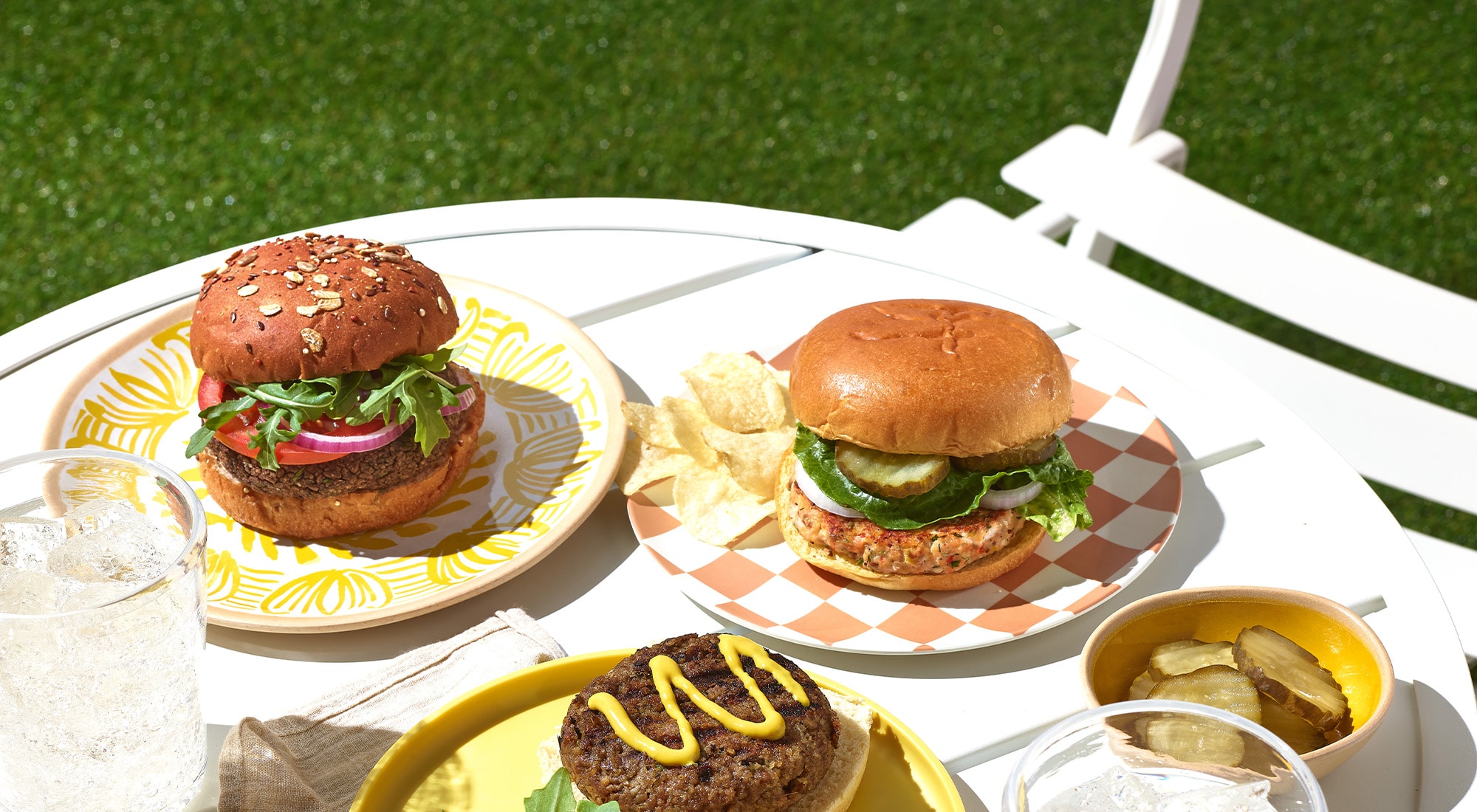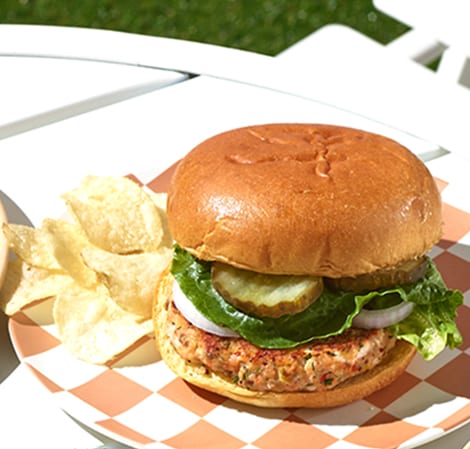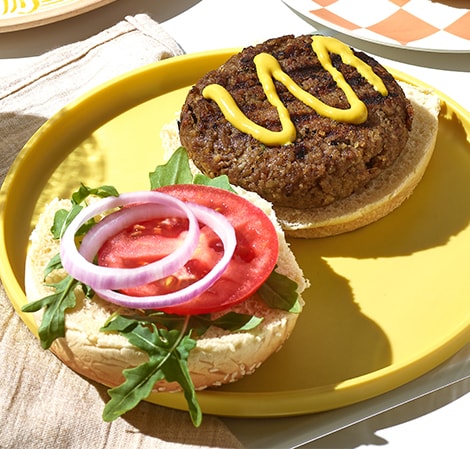Veggies are in the spotlight these days, from Tik Tok trends to fast food restaurant menus to home cooked meals, and for good reason. The research on the health benefits of a plant-forward way of eating continues to show that plant-based diets support long-term health, wellness, and chronic disease prevention.
Take the classic beef hamburger, for example. There are so many creative ways to take inspiration from this dish and incorporate more plants. Let’s look at a few ways to add flavor and improve nutrition in the traditional burger meal that will be sure to leave you, your friends, and loved ones begging for more veggies.
Just to level-set, we are not villainizing the hamburger. On occasion, just like any other food, it is a fine choice. That being said, it benefits both the environment and human health to transition to a more plant-forward diet. About 40% of greenhouse gasses come from agriculture, and meat, especially beef, is one of the main contributors. This is because cows emit a lot of methane, which is a major greenhouse gas; and cows require a lot of land for grazing, which leads to deforestation. When it comes to human health, there is a clear link between high intake of red and processed meats and a higher risk for heart disease, cancer, diabetes, and death. While red meat is an excellent source of protein, vitamin B12, and iron, you can get these nutrients from other non-beef options like chicken, fish, eggs, and plants.
Smaller Portions
Let’s walk, or, rather, take baby steps, through some alternatives to a McDonald’s Quarter Pounder™, which clocks in at 520 calories, 12 grams of saturated fat (62% of the recommended daily max), and 1140 milligrams of salt (50% of the recommended daily max). One option could just be to make a smaller version, a slider if you will. Adjusting the portion size has a number of benefits:
Decreases the total calories, saturated fat, and salt
Satiates that craving for a “real burger”
Makes room for more plants on the plate
A recipe like our Ground Beef Sliders has only 150 calories, 4 grams of saturated fat, and 350 milligrams of salt.
Nutrition Tip: Change your mindset from meat being the star of the plate to it being a supporting actor and fill the rest of the plate with other colorful fruits, vegetables, and whole grains. Pair these sliders with homemade Tabbouleh loaded with tomatoes, cucumbers, and parsley, and a Citrus Poppy Seed Fruit Salad featuring your family’s favorite colorful fruits. Now your plate is full of color (which means full of a vast array of nutrients), packed with flavor, and sure to be a crowd pleaser for kids and adults alike. Everyone will leave the table full and satisfied because of healthy fats, fiber, and protein — a trifecta of nutrients that slow down digestion, making you fuller longer.
Alternative Proteins
Who says a burger must be made of beef? Get creative with your protein choices — you just might find that the new flavor profile tastes better than you thought. Using chicken or turkey as a burger base gives you the texture and flavor you like with significantly less harm to the environment and your health.
Another protein that makes for an amazing burger is salmon, which is packed with super healthy omega-3 fats that support heart and brain health, and help decrease inflammation. Most Americans don’t get enough omega-3 fats, especially children, who need it for their growing brains. Try this Salmon Burger paired with a Greek Salad and Faux Feta for another delicious meal bursting with nutrition.
Vegetable-Based Burgers
Contrary to popular belief, you don’t have to eat animal protein to meet your daily protein needs. In fact, almost all plants contain protein, and you can get all the protein you need from them. These Black Bean Burgers with Sriracha Aioli, for example, contain 8 grams of plant protein. Along with the protein comes a slew of other important nutrients, including fiber, B vitamins (especially folate, which is important for women and pregnant moms), iron, and antioxidants. And, of course, beans and other plant sources of protein are even more environmentally sustainable than animal protein. Try these Black Bean Burgers alongside this Cucumber and Pea Salad with Greens Goddess Dressing for a quick, tasty, and healthy meal.
Blended Proteins
Maybe all these burger alternatives sound exciting to you, or perhaps it seems a bit too much. Well, hold on, we’ve got another option for you: the Shiitake Blended Burger, which is made with a combination of ground beef and savory mushrooms.
Nutrition Tip: What’s fun about these blended beef and mushroom burgers is that the texture and flavor of the burger remains (which is a must for those picky eaters), but the nutrition is really amplified. This blend is lower in fat, salt, and calories, but packed with fiber, vitamins, and minerals. Also, mushrooms have an incredibly small carbon footprint and are a very sustainable food choice.
Try this blended burger paired with anArugula Salad, Roasted Grapes and Lemon Maple Vinaigrette.
The Verdict?
Healthy living and healthy eating are not about drastic change, but small, sustainable shifts over time that can make a big impact on you, your family, and the earth. Pull all these meal combos together and you’ve got a whole week of dinners planned for the family! Which burger will you try first?




![Ground Beef Sliders [Food Processor Attachment]](/content/dam/vitamix/home/articles/Beef_Slider_470x450.jpg)

![Black Bean Burgers With Sriracha Aioli [Food Processor Attachment]](/content/dam/vitamix/home/recipes/q3-2024/BlackBeanBurger_470x449.jpg)
